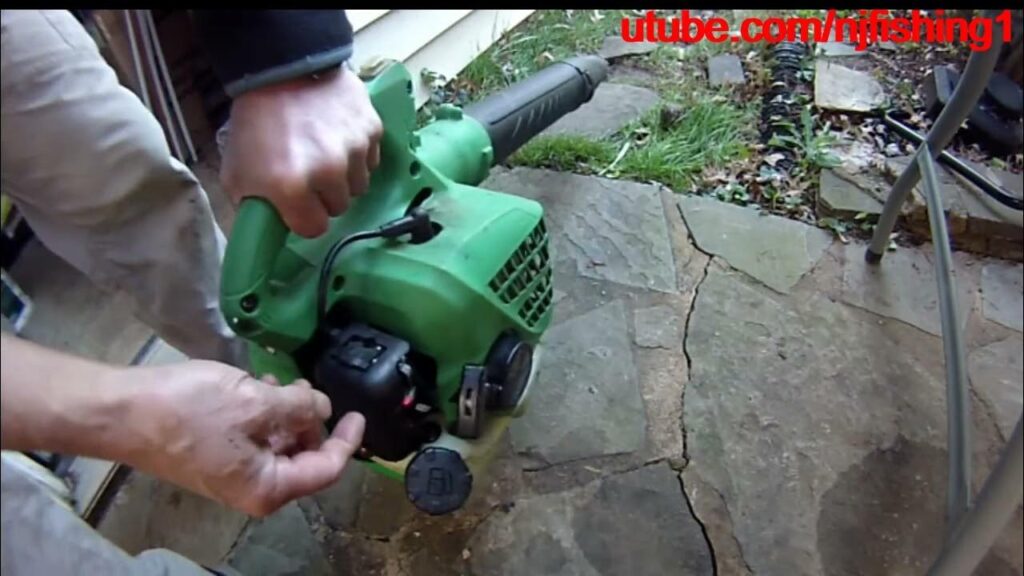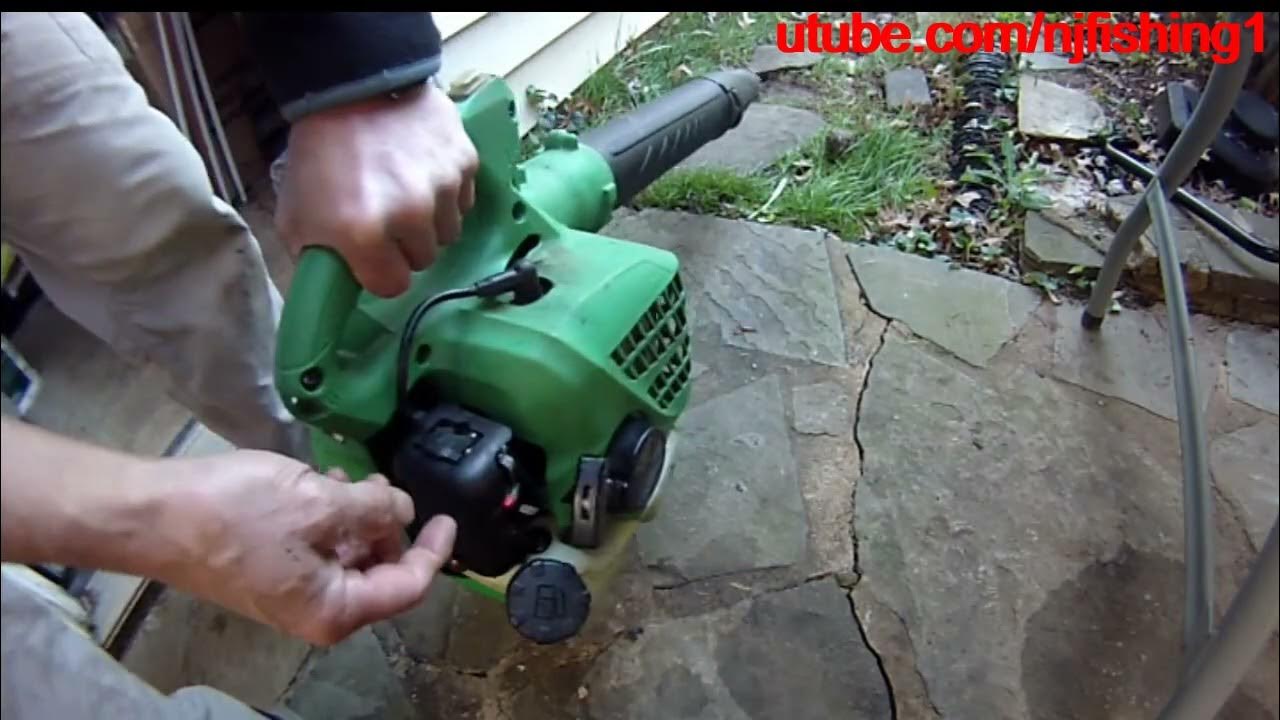
How to Clean a Leaf Blower Carburetor: A Step-by-Step Guide
A leaf blower is an indispensable tool for maintaining a pristine yard, especially during the fall. However, like any small engine, leaf blowers require regular maintenance to function optimally. One of the most critical components affecting its performance is the carburetor. A dirty or clogged carburetor can lead to starting problems, reduced power, and even complete engine failure. This guide provides a comprehensive, step-by-step approach to cleaning a leaf blower carburetor, ensuring your equipment runs smoothly and efficiently.
Why Clean Your Leaf Blower Carburetor?
Before diving into the cleaning process, understanding why this maintenance is necessary is essential. The carburetor’s primary function is to mix air and fuel in the correct ratio to create a combustible mixture that powers the engine. Over time, fuel can degrade, leaving behind varnish and deposits that clog the carburetor’s tiny passages. This leads to:
- Difficulty starting the leaf blower.
- Rough idling.
- Reduced engine power.
- Increased fuel consumption.
- Engine stalling.
Regularly cleaning a leaf blower carburetor can prevent these issues, prolonging the life of your equipment and saving you money on costly repairs or replacements. [See also: Leaf Blower Maintenance Tips]
Tools and Materials Needed
Before you begin, gather the necessary tools and materials. Having everything on hand will make the process smoother and more efficient:
- Screwdrivers: A set of screwdrivers, including both flathead and Phillips head, is essential for disassembling the carburetor.
- Carburetor Cleaner: A specialized carburetor cleaner is crucial for dissolving varnish and deposits.
- Small Brushes: A set of small brushes, such as carburetor cleaning brushes or even old toothbrushes, will help scrub away stubborn residue.
- Compressed Air: Compressed air is used to blow out any remaining debris from the carburetor’s passages.
- Safety Glasses: Protect your eyes from splashes and debris.
- Gloves: Protect your hands from chemicals and grime.
- Clean Rags: Use clean rags to wipe off parts and prevent contamination.
- Small Containers: Small containers are useful for holding parts during cleaning.
- Carburetor Rebuild Kit (Optional): If your carburetor is particularly old or damaged, a rebuild kit may be necessary.
- Camera or Phone: Taking pictures during disassembly can help you reassemble the carburetor correctly.
Step-by-Step Guide to Cleaning a Leaf Blower Carburetor
Follow these steps carefully to ensure a thorough and effective cleaning of your leaf blower carburetor:
Step 1: Disconnect the Spark Plug
Safety is paramount. Before starting any work on your leaf blower, disconnect the spark plug wire. This prevents accidental starting and potential injury.
Step 2: Access the Carburetor
The carburetor is typically located behind the air filter. Remove the air filter cover and the air filter itself. You may need to remove a few screws or clips to access the carburetor. Refer to your leaf blower’s owner’s manual for specific instructions, as designs can vary.
Step 3: Disconnect Fuel Lines and Linkages
Carefully disconnect the fuel lines from the carburetor. Use pliers if necessary, but be gentle to avoid damaging the lines. Also, disconnect any linkages connected to the throttle and choke. Note their positions or take pictures to ensure proper reassembly. Fuel stabilizer use in gasoline can help prevent future build-up.
Step 4: Remove the Carburetor
Unscrew the bolts or nuts that secure the carburetor to the engine. Gently pull the carburetor away from the engine. Be careful not to lose any gaskets or spacers.
Step 5: Disassemble the Carburetor
Place the carburetor on a clean workbench. Disassemble it carefully, noting the location of each part. Remove the fuel bowl, needle valve, and any jets or screws. Use your camera or phone to take pictures of each step to aid in reassembly. Many people find that cleaning a leaf blower carburetor is easier when they have a visual reference.
Step 6: Clean the Carburetor Components
Spray all carburetor components with carburetor cleaner. Use small brushes to scrub away any varnish or deposits. Pay particular attention to the jets and passages, as these are most likely to become clogged. Soak heavily soiled parts in carburetor cleaner for a longer period.
Step 7: Clear Passages with Compressed Air
After cleaning the components, use compressed air to blow out any remaining debris from the carburetor’s passages. This ensures that all passages are clear and unobstructed. Wear safety glasses to protect your eyes from flying debris. Ensuring the passages are clear is vital when cleaning a leaf blower carburetor.
Step 8: Inspect and Replace Worn Parts
Inspect all carburetor components for wear or damage. Replace any worn or damaged parts with new ones from a carburetor rebuild kit. This is especially important for gaskets and O-rings, as they can deteriorate over time and cause leaks.
Step 9: Reassemble the Carburetor
Reassemble the carburetor in the reverse order of disassembly. Refer to your pictures or notes to ensure that all parts are in their correct positions. Tighten all screws and bolts securely, but be careful not to overtighten them.
Step 10: Reinstall the Carburetor
Reinstall the carburetor onto the engine. Reconnect the fuel lines and linkages. Make sure all connections are secure and leak-free.
Step 11: Reinstall the Air Filter and Cover
Reinstall the air filter and air filter cover. Make sure the filter is clean and properly seated.
Step 12: Reconnect the Spark Plug
Reconnect the spark plug wire. Your leaf blower is now ready to be started.
Troubleshooting After Cleaning
After cleaning a leaf blower carburetor, you may still encounter some issues. Here are some common problems and their solutions:
- Leaf blower still won’t start: Check the fuel lines for clogs or leaks. Make sure the spark plug is clean and properly gapped. Consider replacing the spark plug.
- Rough idling: Adjust the carburetor’s idle speed screw. Consult your owner’s manual for the correct setting.
- Reduced power: Check the air filter for dirt and debris. Clean or replace the air filter.
- Engine stalling: Check the fuel filter for clogs. Replace the fuel filter if necessary.
Preventative Maintenance Tips
To prevent future carburetor problems, follow these preventative maintenance tips:
- Use Fresh Fuel: Always use fresh fuel. Old fuel can degrade and leave behind deposits.
- Use Fuel Stabilizer: Add fuel stabilizer to your fuel tank, especially if you plan to store your leaf blower for an extended period.
- Regularly Clean the Air Filter: A clean air filter prevents dirt and debris from entering the carburetor.
- Drain the Fuel Tank: Before storing your leaf blower for the off-season, drain the fuel tank to prevent fuel from degrading and clogging the carburetor.
Conclusion
Cleaning a leaf blower carburetor is a straightforward process that can significantly improve your equipment’s performance and longevity. By following these step-by-step instructions and practicing preventative maintenance, you can keep your leaf blower running smoothly for years to come. Remember to always prioritize safety and consult your owner’s manual for specific instructions related to your model. A well-maintained leaf blower ensures your yard remains tidy and pristine, making yard work less of a chore. Regular maintenance, including cleaning a leaf blower carburetor, is a small price to pay for reliable performance. Don’t neglect this crucial task, and enjoy the benefits of a properly functioning leaf blower. Properly cleaning a leaf blower carburetor involves careful disassembly and attention to detail. The benefits of cleaning a leaf blower carburetor include easier starts and better performance. Cleaning a leaf blower carburetor is easier than replacing it. Always remember safety when cleaning a leaf blower carburetor. [See also: Troubleshooting Leaf Blower Problems]

